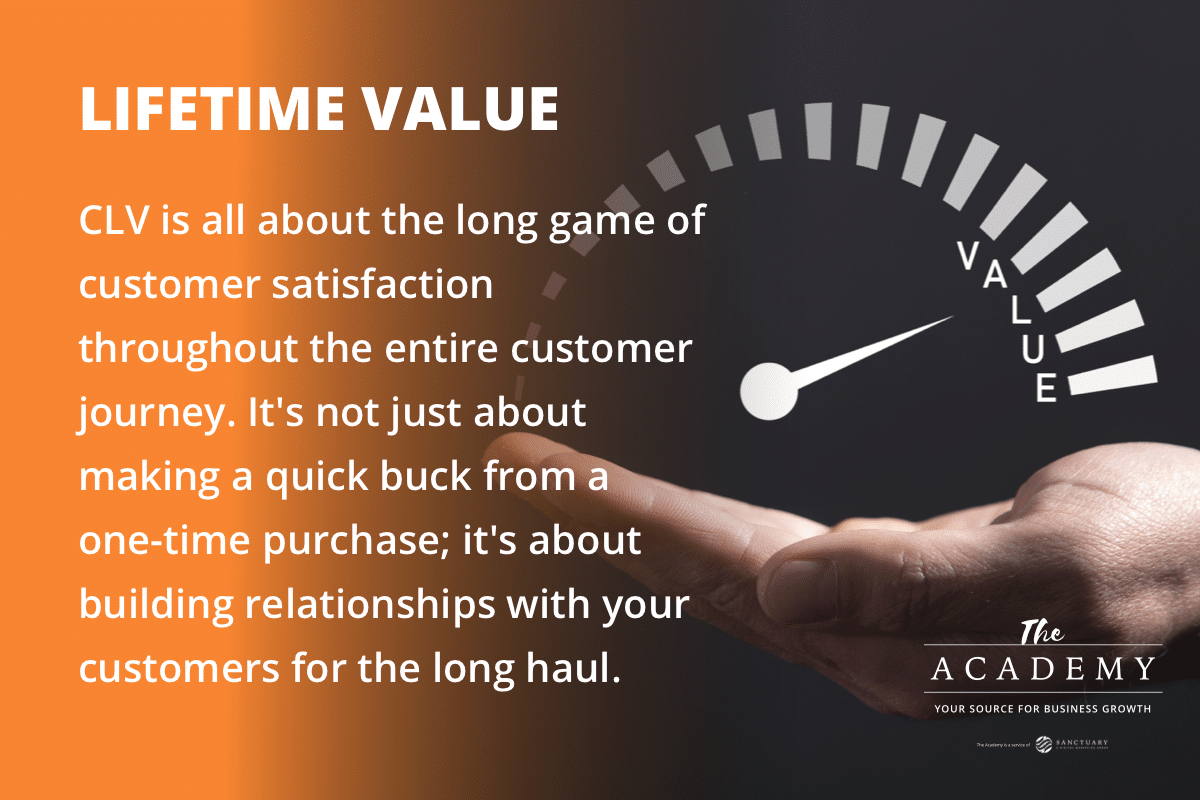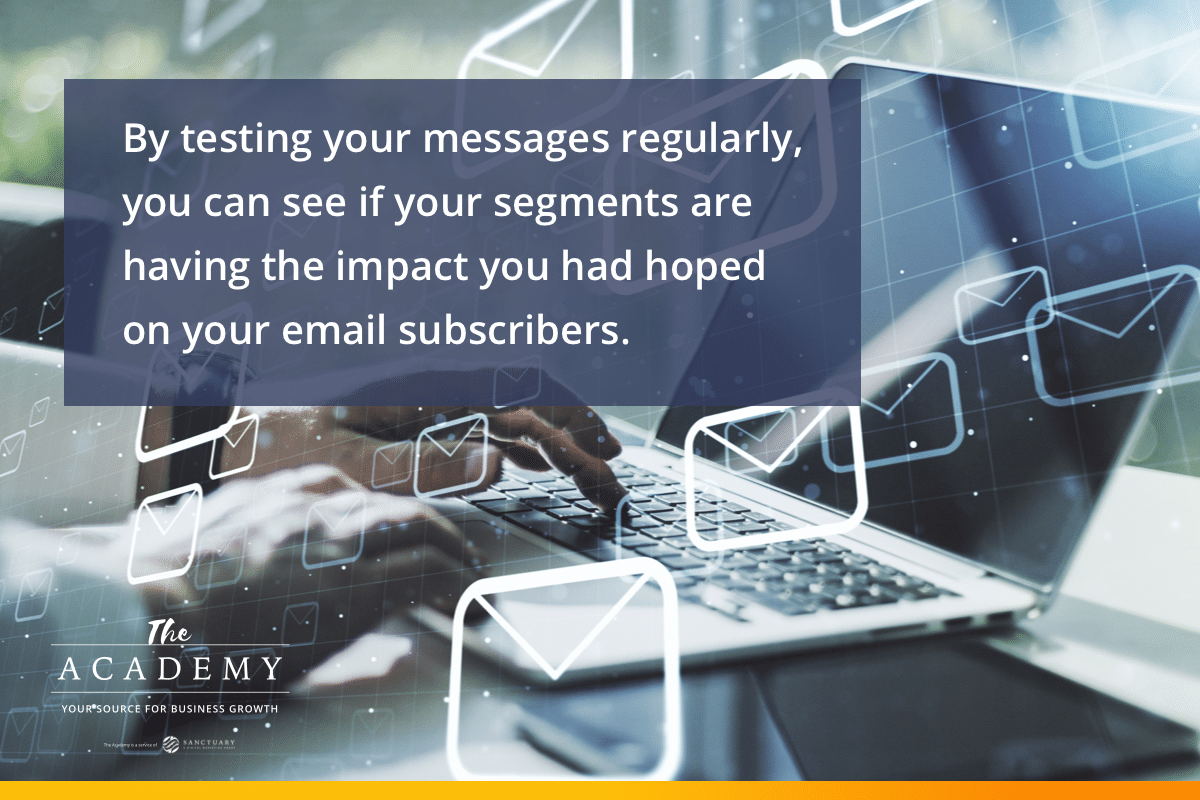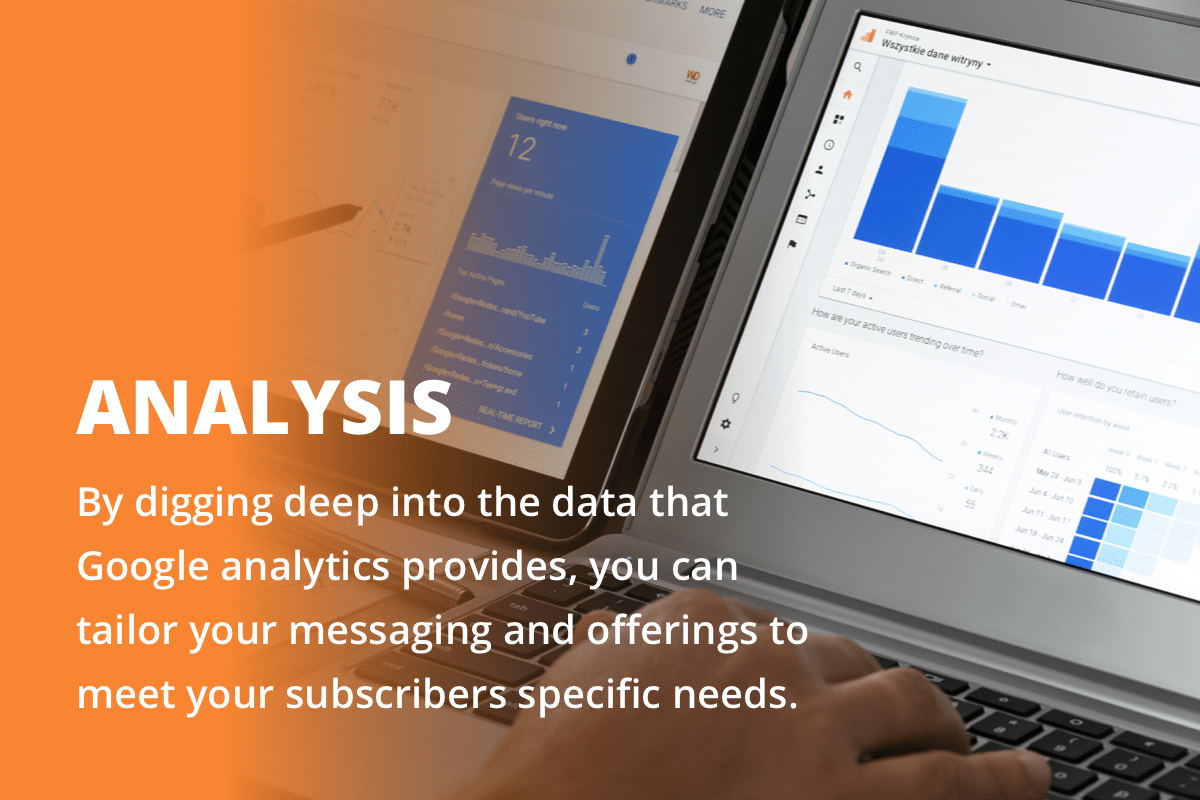
In business, treating all of your leads the same way is a recipe for failure. If you see each customer as exactly the same, you’ll never close as many deals as you could have if you bothered to address their individual needs and concerns more carefully. When selling in person, this comes down to developing relationships and understanding the customer’s problems in an authentic manner.
Things are a bit different with digital marketing, but the idea is the same. When sending out promotional emails to sell goods or services, you don’t want to treat every email address in your list the same way. Rather, you should be using segmentation to target your customer audiences and give those email recipients the focused, targeted attention they deserve. We’ll dive deep into this idea in the article below.
The Big Picture – What is Email Segmentation?
To get started, let’s talk about the idea of segmentation and why it is so powerful in the first place. When you collect a list of email addresses for marketing purposes, you are hoping to reach out to those people in the future with a message that will compel them to make a purchase. However, if you send the same email to everyone, the chances of getting great results will be reduced.
For example, let’s assume that you have a list of 1,000 email addresses. 500 of those addresses come from people who signed up for the mailing list but haven’t yet made a purchase – and the other 500 are from past customers. If you send all 1,000 subscribers the same message, you won’t be able to customize the message in a way that speaks directly to their needs and experiences.
A basic email segmentation example
For instance, you might want to offer new customers a 10% discount on their first purchase to encourage customer loyalty, but that’s not something that makes sense to send to your regular customers or someone who has already purchased from you.
With proper behavioral segmentation of your list, you could send that offer to the 500 people who haven’t yet made a purchase, while sending another type of offer to your past customers. This is a simplistic example of how segmentation works, but it goes to show what can be accomplished when you bring a bit more sophistication to the task of email marketing.
Many Behavioral Segmenting Options for Email Marketing
As the name would suggest, behavioral segmenting is all about using the exhibited behaviors of the members of your email list to break that list up into groups. This is a subtle variation on other types of segmenting, such as using demographic information like age, location, or gender to do your segmenting. Of course, you might choose to layer your segmentation strategies to drill down deeply into your list and target potential customers with extreme accuracy.
For now, let’s just talk about some of the various types of behavior that can be used to segment your email marketing customer list.
Start subscriber segments with past purchases.
For existing customers, one of the best behavioral segmentation opportunities is looking at what they have purchased previously, and when. These behaviors will make it easy to put your customer data into various “buckets” that you can use to properly market to them in the future.
Customer lifetime value
The customer journey doesn’t stop at the initial sale. Crafting an email marketing strategy to sell more to your past customers and encourage customers to purchase multiple times is an important part of tapping into the full customer lifetime value of a sale.

CLV is all about the long game of customer satisfaction throughout the entire customer journey. It’s not just about making a quick buck from a one-time purchase; it’s about building relationships with your customers for the long haul. Email marketing campaigns are a key way to accomplish this important goal with personalized messages and campaigns that lead to brand loyalty.
See, when someone buys from you once and has a great experience, that’s just the beginning. By nurturing and building stronger relationships with your best customers, you can turn a one-time customer into a loyal fan who keeps coming back for more.
An example of behavioral segmentation that’s focused on loyal customers
Consider a company that sells consumer computer components for both Mac and PC machines. When someone buys from this company, they are going to identify themselves as a Mac or PC user by what they order. So, that purchasing behavior can be used to move their email address into either the Mac or PC “bucket”.
Future email marketing offers and messages can then be tailored to the specific interests and needs of each of those two groups because you know exactly what type of product they’re interested in. This concept can be applied to many different kinds of purchasing behaviors, so the sky’s the limit with this technique.
Email engagement – a great customer behavior trigger
Another way to break your email list into different subscriber segments is to look at how the subscribers of that list have been engaging with your past emails. This is another form of behavioral analysis that can give you insights into the quality of each subscriber.
For example, someone who is opening all of your marketing emails, and clicking through on the offers and content of most of them, is obviously quite interested and may be ready to make a purchase. Sending people in that segment a small discount could be enough to close the deal with an engaged customer.
On the other hand, if some members of your customer base never seem to open a message, it might be time to take a different approach. You could have a segment of your list that gets a particular message after they haven’t opened an email in a month (or a few months, or whatever makes sense). That message could even be direct in terms of asking what you could do to bring them into your brand. You can analyze the subscriber behavior of your list to learn more about your target audience and then treat them appropriately based on that information.
Customer status in a brand loyalty program.
If you have a loyalty program in place for your brand, you’ll want to use that program to further segment your marketing messages. The loyal customers who fall into the top tier are your best buyers – so they should be treated as such and offered plenty of perks for staying with you and not switching to the competition.
As you go down the scale, you can offer gradually reduced rewards and incentives that line up with the value those customers bring to the brand. You might even want to use some of your emails to highlight what benefits are available at the higher levels, in order to potentially motivate some of your most loyal customers to spend more with you.
Abandoned e-commerce carts throughout the customer journey
A classic form of behavioral segmentation for e-commerce is using an abandoned e-commerce shopping cart on your site to trigger a specific message or set of messages. If a user is logged in when they add items to their shopping cart, but then those items go unpurchased, you can use pre-configured automation to follow up with an automated marketing message that reminds them about the cart and gives them a nudge to complete the purchase.
Even if this message only leads to a sale a small percentage of the time, it will more than pay off for the time and effort needed to set it up. This is a basic, but key marketing tactic for your e-commerce business.
These examples are a starting point for email segmentation based on customer behavior, but they certainly aren’t the end of the story. There are many more possibilities to consider here when you’re plotting out your holistic email marketing strategy, so be sure to think carefully about your business, your customers, and how you can use this technique to get the best possible results.
Run Plenty of Tests
You may already know that testing is a key component of success with email marketing. That remains as true today as it has ever been, so you won’t want to neglect the testing process while working to target different segments of customers and prospects. By testing your messages regularly, you can see if your segments are having the impact you had hoped on your email subscribers.

Testing marketing messages often involves breaking out only a portion of the potential people within a segment to send them a message that isn’t sent to the rest of your list’s population. That way, you’ll have control to compare against, and you can see whether or not the customized messaging that speaks directly to the members of the list actually led to greater sales. You will likely be confident in your plan and the results you expect it to produce, but email testing to verify customer interest, satisfaction, and loyalty is often surprising. Rather than just assuming you are doing the right thing with your behavioral segmentation, go through the testing process to prove yourself correct.
It’s also important to remember that testing never ends with an email marketing campaign. There is no finish line in this race – there are always more improvements to make and more hurdles to clear. Commit yourself to ongoing testing for as long as you are sending out marketing emails and you will hopefully move gradually toward greater and greater results with your customer base in the months and years ahead.
Different types of email campaign list segmentation
Behavioral Segmentation
First up, we’ve already talked about behavioral segmentation. Now, this one’s all about how people behave and interact with your brand. We’re talking about their actions, preferences, and purchase patterns. Are they loyal customers who keep coming back for more? Do they make impulse buys on your online store? Or are they more cautious and take their sweet time before making a purchase decision? By digging deep into the data, you can tailor your messaging and offerings to meet their specific needs and ultimately increase customer lifetime value.
Psychographic segmentation
Now, let’s shift gears to psychographic segmentation. This concept goes beyond surface-level actions and digs into people’s attitudes, values, and lifestyles. We’re talking about what makes ’em tick on a deeper emotional level. What are their interests, beliefs, and aspirations? Do they value sustainability, adventure, or luxury? Understanding their psychographics helps you connect with your prospects and customers on a more meaningful level.
See, my friend, psychographic segmentation is like getting inside their heads and heartstrings. It’s about resonating with their desires, fears, and dreams. By aligning your email marketing messaging with their psychographics, you create a powerful emotional bond. It’s like becoming their best friend, their confidant, and the one brand they can’t live without.
Demographic segmentation
Last but not least, we got good ol’ demographic segmentation. This one’s all about the basic characteristics of your audience, like age, gender, income, and location. It’s like building a profile of who your ideal customers are at a surface level. Demographics give you a broad understanding of the basic demographics of your target market and help you identify trends and patterns.
Demographic segmentation is like the foundation of your segmentation strategy. It sets the stage for the other two players, behavioral and psychographic segmentation, to shine. While demographics may not tell you the whole story, they provide valuable, customer-based insights that guide your marketing efforts and ensure you’re targeting the right group of people with your email marketing campaigns.
You can actually use Google Analytics to segment your email campaigns based on user demographics. By tracking data such as age, gender, location, and interests, you can tailor your email content to specific segments of your audience. For example, if you notice that a particular demographic group engages more with a specific type of content, you can personalize future emails to cater to those groups based on their preferences.
With that said, let’s talk briefly about how your marketing team can use Google Analytics tools to segment and target like a rock star!
Using Google Analytics to understand customer and purchase behavior
Most email marketing platforms provide some level of analytics and reporting. This will help you to better segment and understand what has happened, what’s working, and what’s not. But you can take your email marketing analysis and segmentation to the next level if you can integrate and start to tap into the power of Google Analytics.

Track your sources
One way to segment your email marketing campaigns using Google Analytics is by tracking your traffic sources. You can create unique UTM (Urchin Tracking Module) parameters for each email campaign and track the traffic it generates on your website. This helps you understand which email campaigns are driving the most engagement and conversions.
Beyond the email – Track user behavior on your website
Another powerful segmentation technique is analyzing user behavior on your website after they click through from your emails. Google Analytics provides you with data on how users navigate your site, which pages they visit, and how long they stay. This allows you to identify specific actions or behaviors taken by email recipients, such as making a purchase, signing up for a newsletter, or downloading a resource.
Define, track, and verify that you’re hitting specific goals
And let’s not forget about goal tracking! Google Analytics allows you to set up conversion goals, such as completing a purchase or filling out a form. By linking these goals to your email campaigns, you can measure their effectiveness in driving the desired actions. This helps you identify which email segments are most likely to convert, allowing you to optimize your future campaigns accordingly.
Remember the Fundamentals of Marketing
As powerful as segmentation can be, having great email list segments isn’t going to increase sales all on its own. There are still plenty of other key factors that come into play when trying to close more deals, so let’s review a few of those here before we wrap things up.
Offer great value and personalize your messages
Even if your offer is relevant to the recipient – as it should be if you have done a good job of segmenting your list – the potential customer still won’t make a purchase unless you are offering great value. Think about how you can make your offers stand out from the competition to make the customer feel like the message was sent specifically to them. Reward them and make them feel special. Personalized attention is a great way to increase customer loyalty and customer satisfaction.
Respect the time and attention of your customer base
You want to keep your brand relevant in your potential customer’s minds, but you don’t want to overwhelm that individual to the point where they get annoyed. Good marketing is striking a balance between staying in touch and staying out of the way. For email marketing specifically, this means not sending too many messages. If someone sees messages rolling in day after day, they are likely to unsubscribe just to stop that flow. So, be strategic with your messaging and make sure the messages you do send have maximum impact. Implementing some level of customer feedback may be a way that you can find a good balance between how often your target audience wants to hear from you.
Be transparent and don’t mislead your subscribers in any way
Simply stated… don’t make promises in your email subject lines that the body of the message fails to deliver to your subscribers. If you suggest that you are going to offer something, you need to come through and actually make that offer. Misleading your potential customers is a sure way to lose them permanently.
Solve problems – especially for your new customers
Most customers are trying to solve some kind of problem, and most businesses are about solving problems for them throughout the buyer’s journey.
When you solve a problem for your customers, they will be willing to pay you for that solution. So, when you think about how to frame your goods or services in front of your target audience, keep their problems at the top of your mind.
What issue are you going to solve, and why is your brand the right one to offer the solution? It’s far easier to connect with your audience when you build your message on a foundation of a problem that needs to be solved. This is yet another way to use segmentation to engage your target audiences.
If you aren’t currently getting the kinds of results you’d like to see out of your email campaigns, segmentation is a logical next step. It will take a bit of time and effort to put this sort of system into place, but the results can be dramatic. Consider the information provided in the article above and tailor your plans to meet the specific needs of your customer base. Good luck with this exciting project!
Most Popular Articles

Seeing Favicons in Your Google Search Results? Here’s Why…
Have you noticed anything different in your Google Search results lately? Google added tiny favicon icons to its organic search results in January. It was…

Business Growth and Digital Marketing News & Tips 11-17-24
Are you encouraging and rewarding innovation? Lee Cockerell is the former Executive Vice President of Operations at Walt Disney World. A lover of traditional red…

Business Growth and Digital Marketing News & Tips 11-27-24
A culture of gratitude "Feeling gratitude and not expressing it is like wrapping a present and not giving it." – William Arthur Ward Beyond being…








